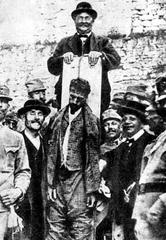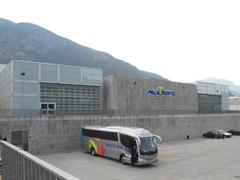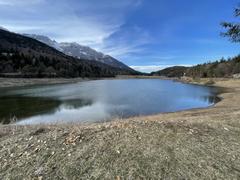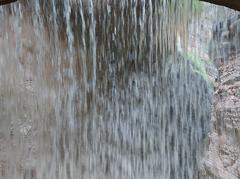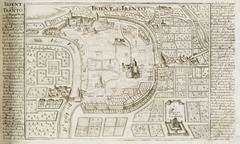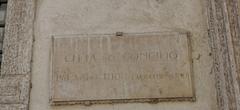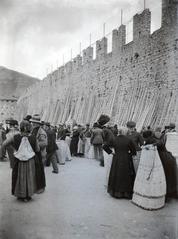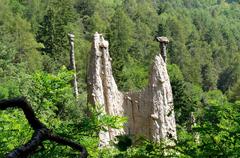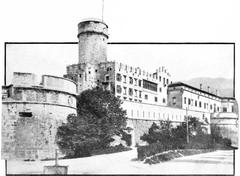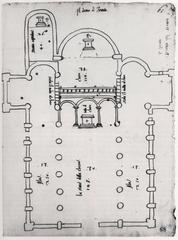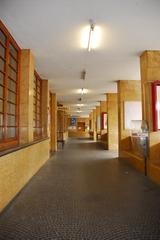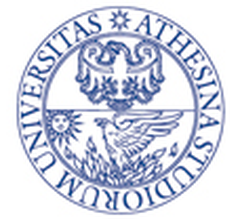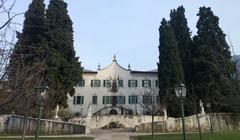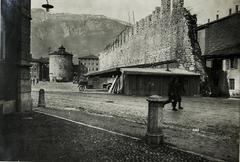Fountain of Do Castradi, Trento, Italy: Comprehensive Visitor Guide
Date: 14/06/2025
Introduction
In the heart of Trento’s historic center, the Fountain of Do Castradi stands as a quiet yet evocative testament to the city’s layered history, artistic tradition, and vibrant urban life. While often overshadowed by the grand Fountain of Neptune in nearby Piazza Duomo, the Do Castradi fountain remains a cherished landmark among locals, reflecting the centuries-old practice of blending utility, artistry, and civic identity in Trento’s public spaces. This guide provides a thorough overview of the Fountain of Do Castradi, including its history, cultural significance, practical visiting tips, accessibility, and nearby attractions—offering everything you need for an enriching visit to this emblematic monument (Italia.it) (Visit Trentino).
Table of Contents
- Introduction
- Historical and Cultural Background
- Artistic and Urban Significance
- The Fountain of Do Castradi: Context and Features
- Visiting Information: Hours, Tickets & Accessibility
- Practical Insights and Visitor Tips
- Nearby Attractions
- Frequently Asked Questions (FAQ)
- Conclusion
- References
Historical and Cultural Background
Evolution of Trento’s Fountains
Trento’s fountains have long been integral to the city’s development, dating back to Roman Tridentum, when advanced aqueducts and public water features were engineered for both necessity and ornamentation (Italia.it). Over the centuries, as Trento prospered through the Middle Ages, Renaissance, and Baroque periods, fountains evolved into civic symbols that marked significant squares and crossroads. They not only provided potable water but also functioned as stages for artistry and gathering, mirroring the city’s social and political transformation (Its All Trip To Me).
During the 16th to 18th centuries, the proliferation of fountains coincided with Trento’s rise as a religious and administrative center, particularly during the Council of Trent. Many fountains—often funded by local patrons or ecclesiastical authorities—became expressions of civic pride and were adorned with motifs reflecting prevailing artistic currents.
Artistic and Urban Significance
Fountains in Trento showcase a blend of classical, Renaissance, and Baroque influences. They feature allegorical figures, heraldic crests, and mythological themes, serving as canvases for the city’s stonemasons and sculptors. Public fountains also played a vital social role, serving as meeting points, festival sites, and sources of daily refreshment. The most famous, the Fountain of Neptune, exemplifies this tradition with its Baroque statuary and central position in Piazza Duomo (The Tourist Checklist).
The Fountain of Do Castradi: Context and Features
While documentation about the Fountain of Do Castradi is less extensive than its more illustrious neighbors, its presence in or near Piazza Duomo links it to Trento’s enduring water heritage. The name “Do Castradi” may reference local lore or characteristics of the fountain’s statuary, in line with Trento’s custom of assigning distinctive names to its public water features. Its architectural details, sculptural elements, and inscriptions offer a window into the craftsmanship and social life of past generations.
As with many of Trento’s fountains, Do Castradi likely served both utilitarian and symbolic purposes—providing water while also acting as a focal point for the surrounding community. Visitors today can appreciate the fountain not only for its historical resonance but also for its integration into the pedestrian-friendly fabric of Trento’s old town.
Visiting Information: Hours, Tickets & Accessibility
- Visiting Hours: The Fountain of Do Castradi is an outdoor monument accessible 24 hours a day, year-round.
- Tickets and Fees: No admission or ticket is required; the fountain is free to visit.
- Accessibility: The site is pedestrian-friendly, with paved paths suitable for wheelchairs and strollers. The area’s cobblestones may pose minor challenges, but ramps and accessible facilities are available nearby (HikersBay).
- Guided Tours: While there are no tours dedicated solely to Do Castradi, many walking tours of Trento’s historic center include it among their highlights. These can be booked through local operators or the tourist information office (Visit Trentino).
Practical Insights and Visitor Tips
- Best Times to Visit: Early mornings or late afternoons provide optimal lighting for photographs and a quieter atmosphere.
- Visitor Etiquette: Respect all monuments—do not climb on or enter the fountain. Note signage if water is not potable.
- Safety: Trento is among Italy’s safest cities, though standard precautions are always advised, especially in busy festival periods (HikersBay).
- Nearby Amenities: The surrounding Piazza Duomo offers cafes, restaurants, public restrooms, and shaded seating.
- Photography: Golden hour and dusk are ideal for capturing the fountain’s details against the backdrop of Trento’s colorful buildings.
Nearby Attractions
- Piazza Duomo: The city’s main square, framed by frescoed buildings and the Cathedral of San Vigilio.
- Fountain of Neptune: The most famous of Trento’s fountains, a masterpiece of Baroque sculpture and a vibrant meeting spot (TrentoArte).
- Palazzo Pretorio and Diocesan Museum: Explore medieval art and ecclesiastical history steps from the fountain.
- Castello del Buonconsiglio: A short walk away, this medieval castle houses frescoes and panoramic terraces (The Crazy Tourist).
- Santa Maria Maggiore Church: A Renaissance gem just minutes from Piazza Duomo.
- Underground Roman Tridentum: Guided tours reveal mosaics and ancient roads beneath the city.
- Seasonal Events: Christmas markets, open-air concerts, and festivals animate the piazza year-round (Visit Trentino).
Frequently Asked Questions (FAQ)
Q: What are the visiting hours for the Fountain of Do Castradi?
A: The fountain is outdoors and accessible 24/7, free of charge.
Q: Are tickets required?
A: No, there is no admission fee or ticket needed.
Q: Is the fountain wheelchair accessible?
A: Yes, most of the area is accessible, with ramps and step-free entry points around Piazza Duomo.
Q: Are there guided tours?
A: Many walking tours of Trento’s historic center include the fountain, though none are dedicated solely to it.
Q: When is the best time to visit?
A: Early mornings and late afternoons in spring through autumn are ideal for pleasant weather and good lighting.
Conclusion
The Fountain of Do Castradi may be a quieter presence compared to Trento’s monumental Neptune, but it offers a meaningful connection to the city’s multi-layered history and communal spirit. Its free, barrier-free access, central location, and integration into Trento’s urban life make it an inviting stop for travelers and locals alike. Whether you’re exploring the city’s medieval lanes, enjoying a festival in Piazza Duomo, or pausing for reflection amidst Trento’s rich architectural backdrop, the Fountain of Do Castradi invites you to experience the enduring charm and heritage of this remarkable Alpine city.
For more insights, guided tours, and real-time updates on Trento’s historical sites, download the Audiala app or consult the official tourism office.

